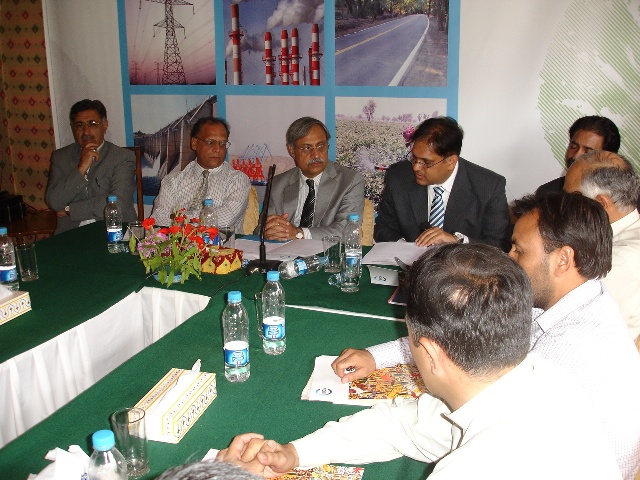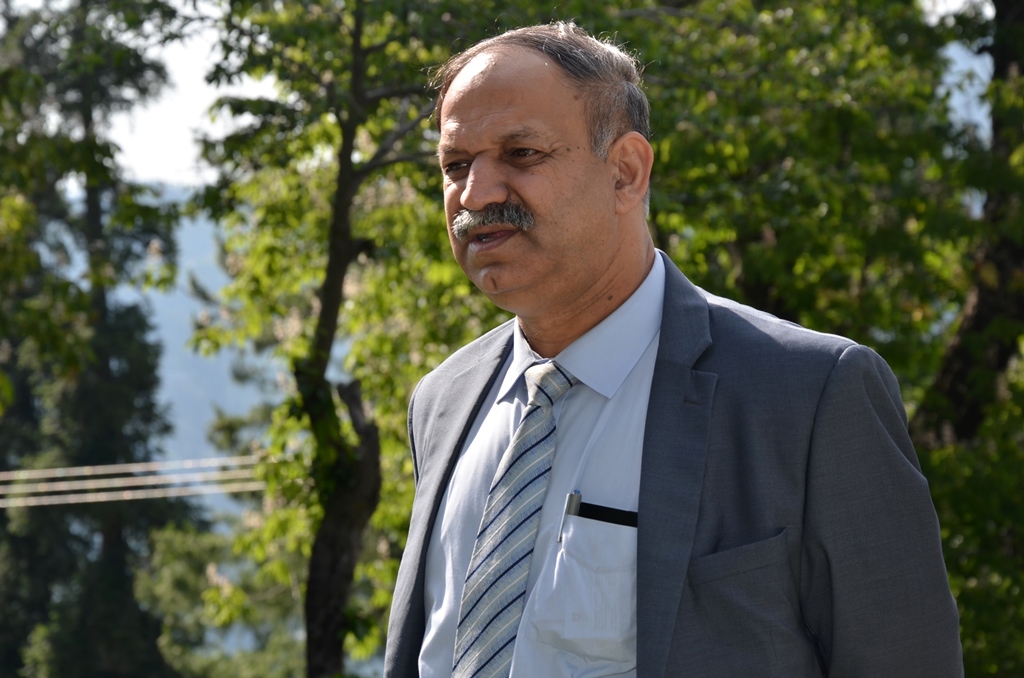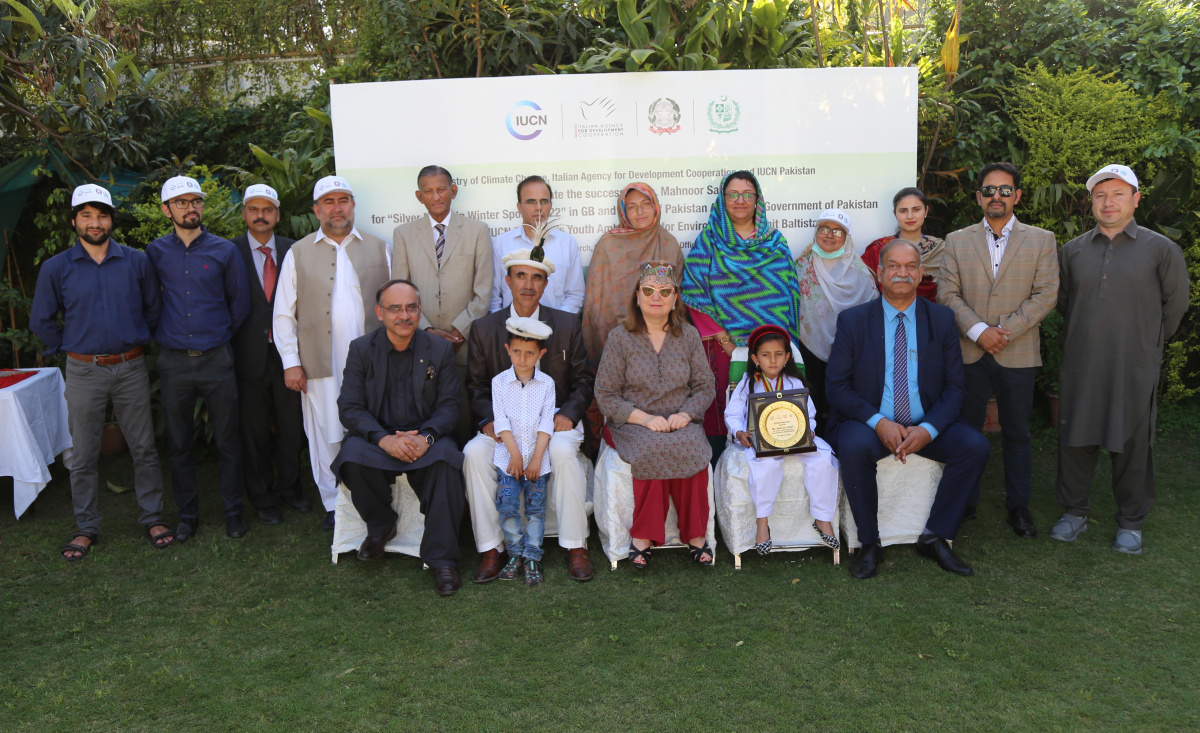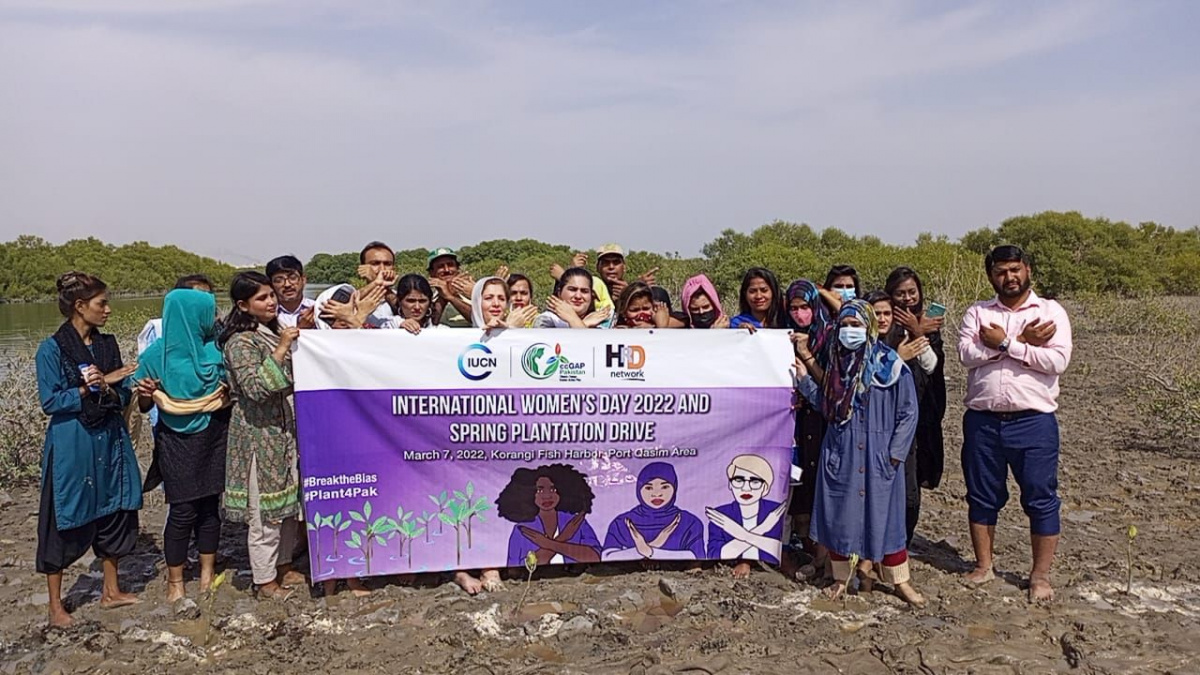Mapping of EIA Processes in Gilgit–Baltistan
Gilgit, July 13, 2010 (IUCN) – Environment Protection Agency (EPA) of Gilgit-Baltistan in collaboration with IUCN Pakistan organized a two days Workshop titled “Mapping of EIA Processes in Gilgit-Baltistan” at Gilgit from July 13-14, 2010.

Photo: IUCN Pakistan
The workshop brought together relevant stakeholders including governmental institutions both from the federal as well as provincial government, civil society organizations, private sector, international organizations, academia and environmental experts/consultants to map Environment Impact Assessment (EIA) practices in Gilgit-Baltistan.
The purpose of the workshop was to map the Environmental Impact Assessment (EIA) Processes in Gilgit–Baltistan in consultation with the other stakeholders. The EIA map is an instrument that gauges the strength and weaknesses of an EIA system with respect to how it is organized formally as well as its implementation in practice. The EIA map can contribute to the formulation of priorities for EIA strengthening. In addition, the EIA map provides a useful reference for monitoring and evaluation purposes.
Pakistan is paying a very high price for environmental degradation. Rs. 365 billion per annum or Rs.1 billion per day is the figure estimated by the World Bank which is an excessive environmental damage in monetary terms for an underdeveloped country like Pakistan. Dr. Aurangzeb Khan, Chief Environment Section of Planning Commission of Pakistan made these remarks in the inaugural address at the workshop titled: “Mapping of EIA Processes in Gilgit-Baltistan” at Gilgit.
“Keeping in view the compliance and monitoring aspects that are becoming more and more stringent internationally, we need to improve our planning, monitoring and implementation tools” stressed Dr Khan. He said one way of conforming to them is to introduce Strategic Environmental Assessment (SEA) at policy level and proper enforcement of Environmental Impact Assessment at project levels.
Imran Sikandar Baloch, Secretary Forest, Tourism & Environment, Government of Gilgit-Baltistan in his speech said that the renewable natural resources are the main identity of Gilgit–Baltistan. He further said that there is established potential of 45,000 MW of Hydro Power in the area. Widening of Karakoram Highway is underway; Dia-Mir Bhasha & Bunji Dam projects have been approved. However, he warned that if all these projects start without the EIA we will lose our fragile, natural resources and to save these natural resources we need to take drastic preventive measures. He emphasize on the capacity enhancement of the young & talented staff of Gilgit-Baltistan EPA. He appreciated the efforts of IUCN Pakistan for organizing this event and hoped that the recommendations made will help the government to take them forward.
Asad-ullah-Faiz, Director Pak-EPA praised the project for its efforts in promoting EIA in Gilgit-Baltistan. He said that in the previous years due attention was not paid to Gilgit-Baltistan. However this project conceived by IUCN, ensured that Gilgit-Baltistan is a part of the project. That is the reason IUCN ensured bringing all the EPA’s operational in Pakistan on board to make this project successful.
Babar Yaqoob Fateh Mohammad, Chief Secretary Gilgit Baltistan speaking as Chief Guest at EIA mapping workshop closing ceremony appreciated project proponents to include Gilgit-Baltistan as one of the project partners. He said that the local population’s high level of dependence of their natural resources makes it one of the most ecological sensitive areas of Pakistan. We want development but not at the cost of irrecoverable loss to our environment, he added. He felt that project is very timing and will help achieving sustainable development in the region. He also assured his full support for the project.
Participants at the workshop were of the view that Pakistan has achieved an impressive level of economic growth. However, this growth has a very high price tag. It is estimated that environmental degradation costs the country at least 6 per cent of the GDP. To keep the current level of growth to be sustainable, it will be necessary to protect the environment and adequately preserve the country’s natural resources. It was unanimously agreed at the workshop that two very effective tools that can help achieve sustainable development are: Environmental Impact Assessment (EIA) and Strategic Environmental Assessment (SEA).



